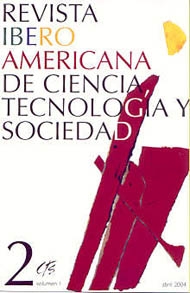Os ambientes da inovação
DOI:
https://doi.org/10.52712/issn.1850-0013-1077Resumo
No Instituto de Ciência e Tecnologia Nucleares de Havana, por ocasião de um seminário sobre gestão da ciência realizado em 1999, foi apresentada a história de um fracasso científico. Tratava-se de feijões — como se sabe, a leguminosa estrela da culinária cubana. O problema com os feijões era que a variedade mais difundida e socialmente aceita estava sofrendo uma queda acentuada na produção devido a uma praga que afetava as plantações. Os brilhantes biotecnólogos cubanos se dedicaram à tarefa e, em pouco tempo, desenvolveram uma nova variedade, idêntica à tradicional em todos os parâmetros relevantes (cor, tamanho, textura etc.), mas imune à praga. Comercializaram o produto com justificado otimismo. No entanto, os feijões modificados foram um fracasso em termos de aceitação social. As pessoas diziam que “não tinham o mesmo gosto”. Os cientistas haviam feito todos os testes técnicos possíveis, controlado todas as variáveis cientificamente relevantes, mas esqueceram-se do mais óbvio: oferecê-los para degustação aos cubanos comuns. A recepção social, com todas as suas subjetividades e idiossincrasias, é o árbitro final da inovação. A história dos feijões cubanos é uma excelente parábola sobre as limitações da forma habitual de entender a inovação.
Downloads
Downloads
Publicado
Como Citar
Edição
Seção
Licença
Copyright (c) 2025 CC Attribution 4.0

Este trabalho está licenciado sob uma licença Creative Commons Attribution 4.0 International License.
Todas os números de CTS e seus artigos individuais estão sob uma licença CC-BY.
Desde 2007, a CTS proporciona acesso livre, aberto e gratuito a todos seus conteúdos, incluídos o arquivo completo da edição quadrimestral e os diversos produtos apresentados na plataforma eletrônica. Esta decisão é baseada no entendimento de que fornecer acesso livre aos materiais publicados ajuda a ter uma maior e melhor troca de conhecimentos.
Por sua vez, em se tratando da edição quadrimestral, a revista permite aos repositórios institucionais e temáticos, bem como aos sites pessoais, o autoarquivo dos artigos na versão post-print ou versão editorial, logo após da publicação da versão definitiva de cada número e sob a condição de incorporar ao autoarquivo um link direcionado à fonte original.











